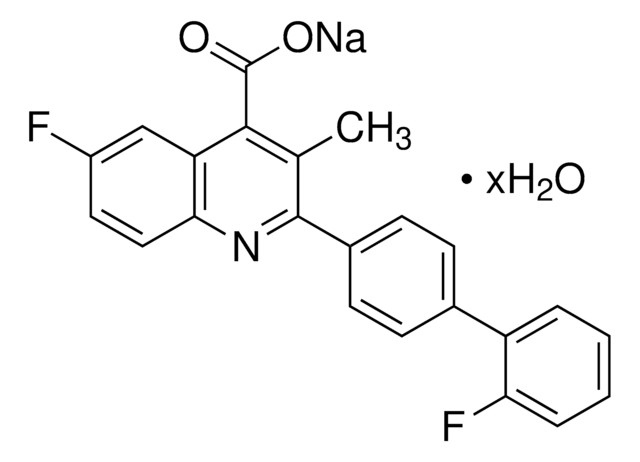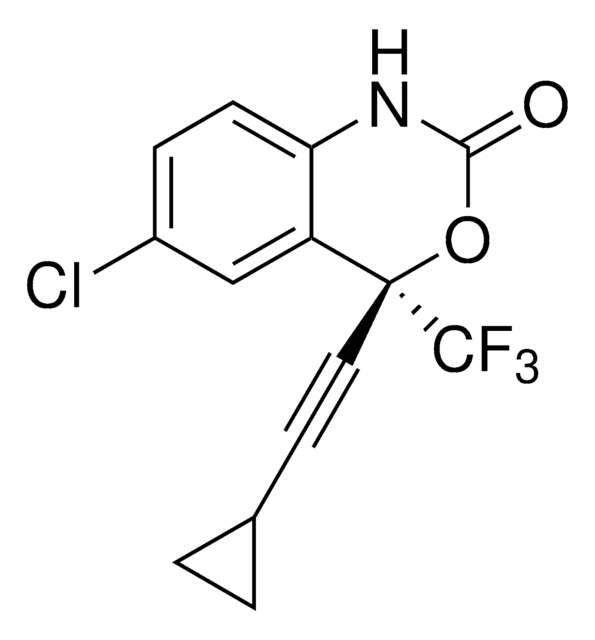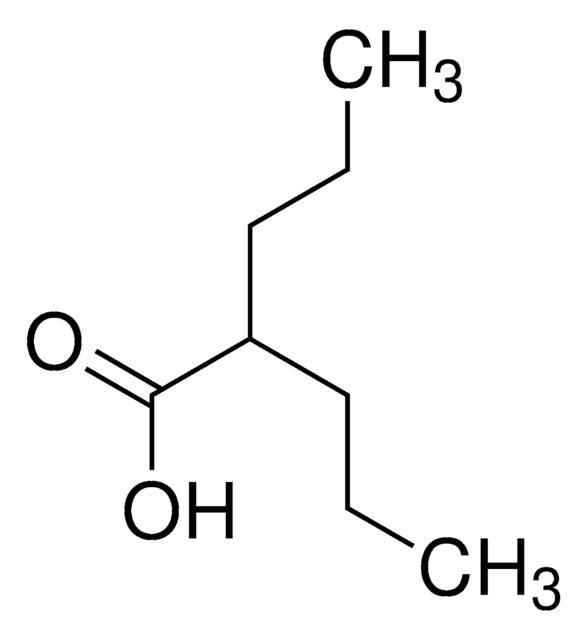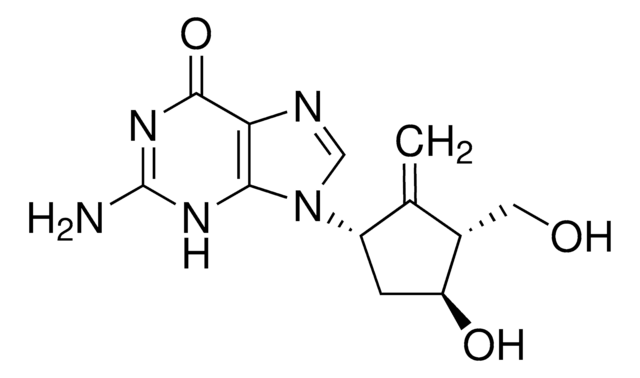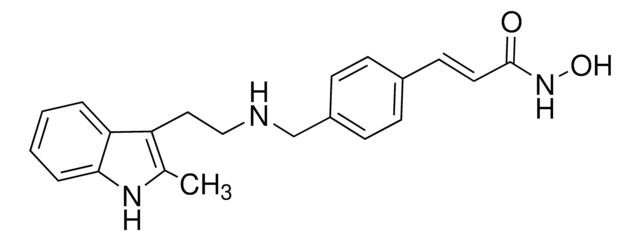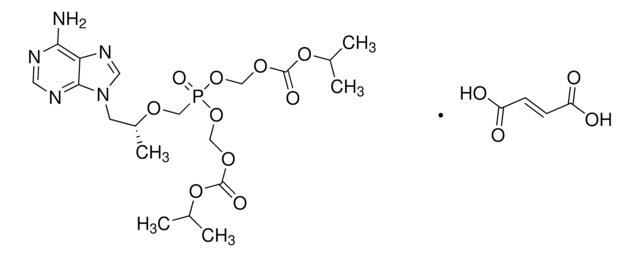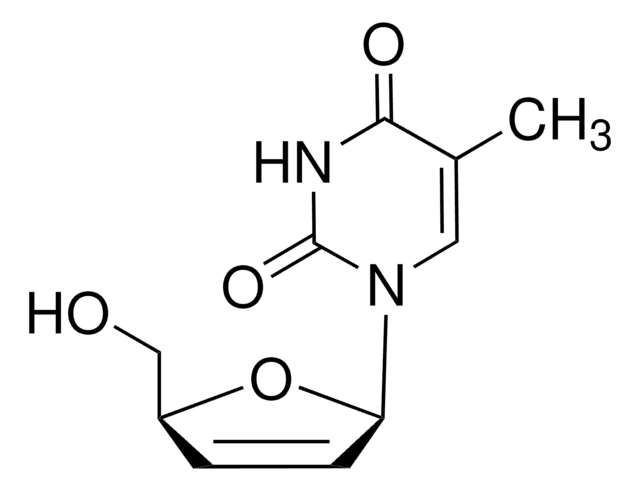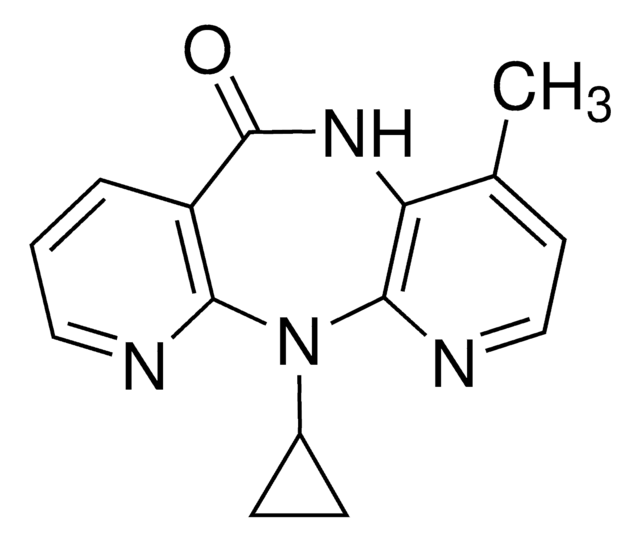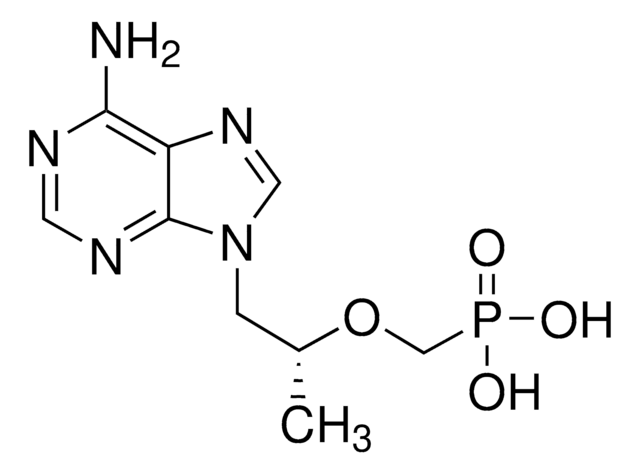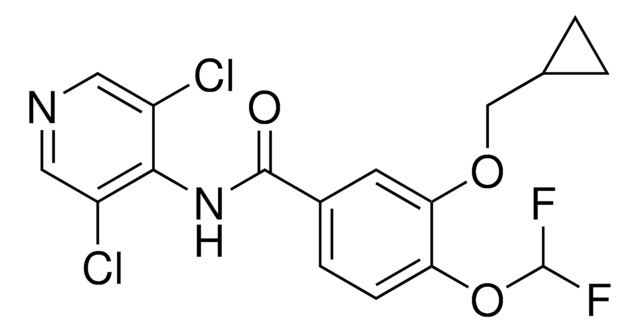SML0536
Efavirenz
≥98% (HPLC)
Synonym(s):
Efavirenz, (4S)-6-Chloro-4-(2-cyclopropylethynyl)-1,4-dihydro-4-(trifluoromethyl)-2H-3,1-benzoxazin-2-one
About This Item
Recommended Products
Quality Level
Assay
≥98% (HPLC)
form
powder
optical activity
[α]/D -90 to -100°, c = 1 in methanol
color
white to beige
solubility
DMSO: 15 mg/mL, clear
storage temp.
−20°C
SMILES string
ClC1=CC=C2C([C@@](C#CC3CC3)(C(F)(F)F)OC(N2)=O)=C1
InChI
1S/C14H9ClF3NO2/c15-9-3-4-11-10(7-9)13(14(16,17)18,21-12(20)19-11)6-5-8-1-2-8/h3-4,7-8H,1-2H2,(H,19,20)/t13-/m0/s1
InChI key
XPOQHMRABVBWPR-ZDUSSCGKSA-N
Looking for similar products? Visit Product Comparison Guide
General description
Application
- to assess its anti-porcine endogenous retrovirus (PERV) activity
- in cytotoxicity assay
- to investigate the solute-solvent effects of efavirenz by means combined time-dependent density functional theory (TD-DFT) and spectroscopic calculations
Biochem/physiol Actions
Features and Benefits
Legal Information
Signal Word
Danger
Hazard Statements
Precautionary Statements
Hazard Classifications
Acute Tox. 4 Oral - Aquatic Acute 1 - Aquatic Chronic 1 - Repr. 1B
Storage Class Code
6.1C - Combustible acute toxic Cat.3 / toxic compounds or compounds which causing chronic effects
WGK
WGK 3
Flash Point(F)
Not applicable
Flash Point(C)
Not applicable
Choose from one of the most recent versions:
Already Own This Product?
Find documentation for the products that you have recently purchased in the Document Library.
Customers Also Viewed
Related Content
Discover Bioactive Small Molecules for ADME/Tox
Our team of scientists has experience in all areas of research including Life Science, Material Science, Chemical Synthesis, Chromatography, Analytical and many others.
Contact Technical Service